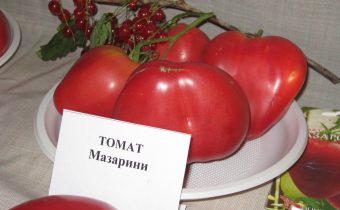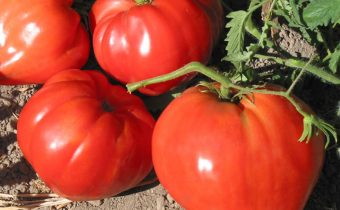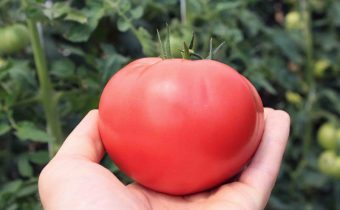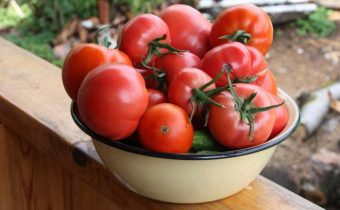Tomato "Klusha": characteristics of the variety, especially the cultivation
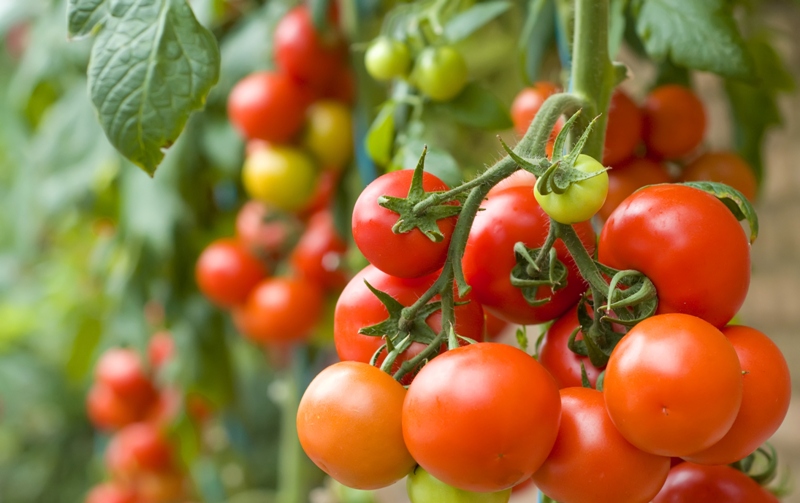
Having studied the characteristics and characteristics of the Klusha variety, you will understand: do you need a new, early-ripening, fruitful, unpretentious inhabitant in your garden who will delight you with his tasty and bright fruits.
general information
In the market for gardeners - amateurs and farmers a huge selection of tomato seeds: as they say: "Eyes scatter." So, what should we choose? How to find something worthwhile, because the crop depends on the correctly selected variety, and it “feeds the year”.
In this abundance among the undersized representatives of the determinant type, the Klusha tomato stands out, the reviews and photos of its yield simply delight and inspire.
This variety conquers the hearts and gardens of summer residents with its friendly harvest, bright and even fruits.
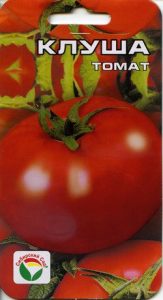 Tomato "Klusha": characteristics and description of the variety
Tomato "Klusha": characteristics and description of the variety
- It refers to low-growing tomato species for open ground, medium early ripening period;
- Standard bush, up to 60 cm high, rather steady, does not demand a support;
- Does not require staking;
- The plant is compact, on 1 square. meter can land up to eight pieces;
- A bountiful harvest: 2–2.4 kg from a bush;
- Friendly maturation;
- Delivers transportation;
- Fruits are round, red, weighing from 90–120 g, but there may be 150 g;
- Universal purpose: suitable for processing and fresh consumption;
- Taste - ordinary, tomato, sweet and sour;
- You can grow in open ground, greenhouses, with a closed root system in vases and boxes.
See also: Polycarbonate greenhouse tomatoes, top grades
The advantages and disadvantages of the variety
Let's see if these tomatoes are good?
According to the rules, the lower leaves are necessarily broken, and the stepchildren are pinched, leaving a stump of 1.5 cm, since there will be no sense from them. But the upper stepchildren are left, because the variety is determinant, that is, not high, it stops growing by itself, completing the top of the head with a floral brush.
The butchers, above the fifth leaf, are left turning them into additional stems. As soon as they form the ovary, the extra stepchildren are removed from these stems.
For what? In order for the crop to ripen in harmony, the fruits did not become shallow, the ovaries did not crumble. By pinching the stepsons, you save the strength of the plant, which it will gladly give to the fruit.You should not be greedy, because you grow for yourself, and a quick harvest is more useful than from an exhausted plant that you have to feed so that it can give you a couple more fruits.
Do not forget that the tomato "Klusha" mid-ripening period. These varieties are distinguished by the fact that they give their crop in 100–110 days, and it is very important not to be mistaken with the dates of sowing of seeds.
What do we get? In the middle lane in mid-June, the average temperature is set at 15–20 degrees, which is comfortable for the growth of heat-loving plants, like tomatoes, and should be planted at this time. From the 15th we subtract 60, it turns out on April 15, we also subtract 5 days for germination, it turns out that the optimal sowing for Klusha tomatoes is April 10.
Everyone will find their own mistakes, that you should not germinate seeds of different varieties at once, guided only by the lunar calendar or a free weekend.
After all, landing time is very important! The success of the harvest depends on it. If you sow tomatoes earlier, as many try to do this, then it turns out that not young, fresh seedlings are planted in the ground, ready to “give birth” to large healthy offspring, but “old grandmother”, the vegetation period of which is already at the end.
We collect the advantages:
- Early and productive variety;
- The bush is short and compact;
- Easy care;
- Resists disease;
- Universal purpose;
- Suitable in any region and climate;
- Fruits of high commercial quality, easily tolerate transportation;
- Can grow in containers at home or on the balcony.
Are there any flaws in tomato "Klusha"?
The minuses of this class, some gardeners include such qualities as:
- Short storage;
- Small fruits.
But let me! In early ripe varieties, the crop does not have to lie for long. They are so good that they ripen by mid-August and are ready for processing, which allows them to avoid such diseases as phytophthora.
Dissatisfaction with small fruits is also inadequate, since the tomato is not a salad, but a universal one. Yes, it does not have sugar content, but it is rather a “plus”, and therefore it can be used by people with elevated blood sugar levels and watching their figure.
Here is the conclusion - there are no defects in this variety!
See also: How to feed tomato seedlings to be plump?
Peculiarities of growing the variety "Klusha"
As mentioned above, we determine the time of sowing seeds for seedlings, soak them in the solution "Fitosporin", which accelerates germination and protects seedlings from diseases.
Sowing seeds
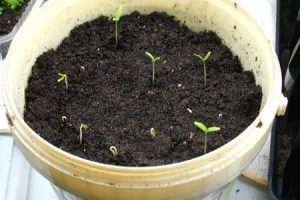 It is safer to use purchased land for planting: pour it into flat containers 5–7 cm high, shed with a warm solution of potassium permanganate. Between them should be 5 cm, and bury the seeds no more than 1 cm, between the seeds make a distance of at least 2 cm, sprinkle gently with earth.
It is safer to use purchased land for planting: pour it into flat containers 5–7 cm high, shed with a warm solution of potassium permanganate. Between them should be 5 cm, and bury the seeds no more than 1 cm, between the seeds make a distance of at least 2 cm, sprinkle gently with earth.
Cover the containers with food film or glass and place them in a room where the temperature will always be 22-25 degrees.
Seedling care
After 3-5 days when shoots appear, remove the film and lower the daytime temperature to 20, and the nighttime to 16 degrees. Do not allow the soil to dry up, but not to fill.
At this time, you need to highlight the seedlings: daylight should not be less than 16 hours. Although tomatoes Klusha not stretched out, but the violation of the light mode can play a bad role for future harvest.
Picks
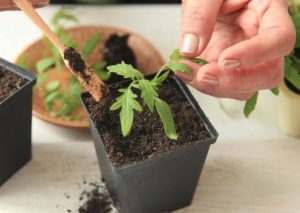 As soon as two true leaves appear, it’s time to dive. In the pots for seedlings fill the ground, which is prepared in advance: sand, peat and humus are taken in equal quantities, mixed, and additional fertilizing with phosphorus content is added to the same place.
As soon as two true leaves appear, it’s time to dive. In the pots for seedlings fill the ground, which is prepared in advance: sand, peat and humus are taken in equal quantities, mixed, and additional fertilizing with phosphorus content is added to the same place.
This element strengthens and develops a weak root system in tomatoes. For this variety it is necessary, since it is impossible to deepen the seedlings when planting due to the fact that Klusha is a low-growing bush. Therefore, our task is to develop the root system.
Do not worry that the plant as if is suspended in growth, this is because the roots are growing. At this time, loosen the soil gently with tweezers.
Feeding seedlings
When the five leaves appear, the procedure of feeding, but already liquid, repeat and, for prevention, treat the seedlings with a means of pests, for example, Confidor.
If the leaves of the seedlings are closed, place it away from each other to give light access to the stems, protecting the plants from stretching.
Ideal ready seedlings bright green, stocky, with buds in the first inflorescence.
Transplanting seedlings to ground
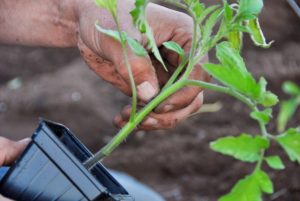 During the landing of plants in the ground, prepare the hole, at least 25 cm deep, plentifully shed water with potassium permanganate, heated in the sun. Then phosphorus-containing fertilizer is poured into it, according to the popular recipe - a scoop of ash from the burned straw or grass, weeds, but not from the brazier! Add onions and garlic peels for pests. The wells are made at a distance of 20–30 cm from each other and as many between the rows.
During the landing of plants in the ground, prepare the hole, at least 25 cm deep, plentifully shed water with potassium permanganate, heated in the sun. Then phosphorus-containing fertilizer is poured into it, according to the popular recipe - a scoop of ash from the burned straw or grass, weeds, but not from the brazier! Add onions and garlic peels for pests. The wells are made at a distance of 20–30 cm from each other and as many between the rows.
Planted tomatoes carefully, trying not to bare the root, cover the hole with earth and mulch around the plants.
It is best to make mulch from needles or chopped straw: a pillow 5 cm thick.
This will give a tangible effect:
- The earth will not dry out;
- At night - not cool, and during the day - does not heat up;
- Weeds will not appear;
- It is not necessary to loosen the ground after watering;
- On such a pillow, the fruits will not deteriorate, even if the plant falls under their weight. This method is called "collective farm", when the bushes are not tied up.
Plant Care
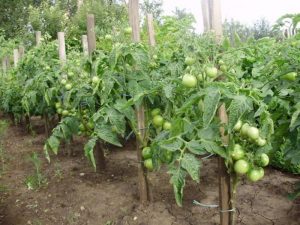 This method is very suitable for the Klusha tomato, because we will grow it in 4 stems, each of which will be fastened by 3 –5 brushes, under the weight of the branch will lie on the ground, because the main stem is usually tied up.
This method is very suitable for the Klusha tomato, because we will grow it in 4 stems, each of which will be fastened by 3 –5 brushes, under the weight of the branch will lie on the ground, because the main stem is usually tied up.
The lower leaves are pruned as they dry and yellow, giving air and light to the fruit. There are complaints in the reviews that the tomato is sour. This is because of the cultivation error: if the large shade of the fruit is foliage, and the sun does not fall on them, then the taste changes. Do not be afraid to remove excess greens, the crop will tell you "Thank you."
To prevent tomato plants from getting sick, they are sprayed for the season every two weeks for phytophthora and other diseases with a “Healer” remedy. Need to handle in cloudy and cool weather.
See also: How does the tomato feed during the flowering and fruit set?
Do you know the rules for watering? A huge mistake, who believes that the soil should not dry out.
Tomato refers to a culture where "rarely and aptly," that is, water it abundantly, at the root, so that water does not fall on the leaves and stem.
Now hoses buried in the ground for drip irrigation are popular, but there is a method that has proven itself. It is simple and reliable: it is dropping to the root when planting a bottle, neck down, and the bottom is cut off. In such a container, you can pour water during irrigation several times, allowing it to gradually absorb. This method helps to know the amount of water poured under the plant. It is convenient to breed root feeding in them.
Observing the rules of planting and care, you get the expected result.
A lot of joy will bring you tomatoes under the ridiculous, but kindly name "Klusha".
Good harvests and new discoveries!


